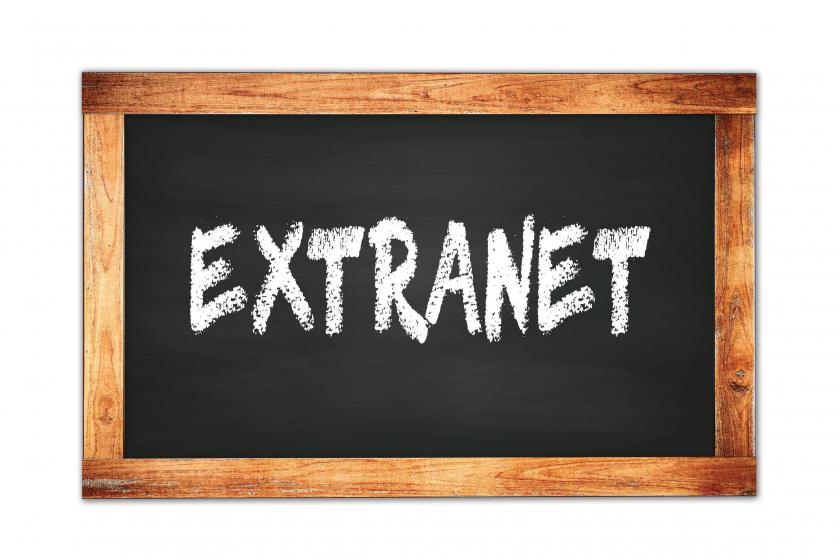A Problem 40 Years in the MakingA Problem 40 Years in the Making
Extranets are indispensable in our modern era. Without the Extranet-as-a-Service, the enterprise couldn't keep pace with modern business practices.

In 1983, Bob Metcalf, the inventor of Ethernet, postulated that the value of a network grows as the square of the number of its users. In other words, double the number of connections on your network is worth four times as much. Decades later, he published a paper showing that "Metcalf's Law" was fully proven by Facebook's meteoric rise.
It may not have the cachet of Moore's better-known law, but honestly, it is more applicable to what's happening in modern enterprises.
If Metcalf's law seems overly theoretical, don't worry. You can see the shadow of Metcalf's law everywhere in today's business world. Driven to harness this network effect, enterprises are sprinting to expand their networks by connecting to:
Customers
Business partners
Sister companies
Remote workers
Edge networks
To accomplish that, the business first extends its network to include all business partners.
Legacy Extranets Fail
The problem is that legacy methods of setting up business extranets struggle to meet the demands of today's fast-paced, digitally-driven business environment due to their inability to adapt to technological advancements, security issues, high maintenance costs, inefficiencies, obstacles to digital transformation, and limitations in data sharing. Specifically, legacy networks:
Struggle to keep up with the pace of digital innovation.
Lack the flexibility and adaptability to integrate with new technologies and protocols.
Require specialized knowledge and resources to deploy, configure and maintain, which can be a significant burden for businesses.
Lack the speed, efficiency, and user-friendly interfaces of modern systems, leading to reduced productivity and frustration among users.
Lack the capacity or capability to handle the volume and variety of data that modern businesses need to share.
How can a modern enterprise embrace extranets in a way that addresses these challenges?
Extranet-as-a-Service – The Modern Way to Accomplish B2B Networking
Gartner introduced the concept of the Extranet-as-a-Service in their 2023 Hype Cycle for Enterprise Networking. Gartner predicts that Extranets-as-a-Service will simplify the setting-up and operation of extranets.
In the era of the data economy, every vendor offering a product that generates data will likely convert that product into a service to provide a better Service Level Agreement (SLA) to their customers. Consequently, every business entity will require access to their data. This situation presents interesting challenges from both security and compliance perspectives. Opening up security access to your business partners will necessitate much stricter scrutiny and adherence to compliance standards.
Data exchanges will be established at multiple points, with two ideal locations for creating these business partner data exchanges, often referred to as extranets-as-a-service:
Middle Mile: This location allows partners to have ample bandwidth and is much closer to the source of the data. Instead of backhauling all the data to your own Demilitarized Zone (DMZ) or cloud, data exchanges can occur in the middle mile.
Cloud: Some data exchanges will occur within the cloud, particularly related to application services. With the expected extensive data growth in the coming years and limited available bandwidth for backhaul to the cloud,
Business partners will prefer to exchange data at the most financially and regulatorily sensible location for them.
How does an Extranet-as-a-Service work? First, eliminate all that complex extranet gear you've been manually provisioning, configuring, and managing for decades. You know—things like firewalls, VPNs, SSL certificates, etc.
Instead, use a modern, high-speed, secure Network-as-a-Service to connect partners, customers, and other networks. Just place a single, simple "network edge" within the network you want to connect to the NaaS (it can be software or a connection to one of our gateways).
You then define all networking policies based on business relationships (who can talk to whom and what each user is permitted to do) through a simple, visual interface on a cloud portal. And just like that – you've networked with your partners, customers, etc. Simple and fast.
Extranet-as-a-Service Benefits
The benefits of this modern approach are clear and compelling:
Agility. Set up your extranet with a few clicks in a few minutes -- no complex hardware to purchase, install, and configure. Work at the speed of business.
Private. The NaaS keeps all data private while in transit. Data is never decrypted outside of each organization.
Performant. Think of the NaaS as a modern, next-generation of MPLS. Because it is private (like MPLS), it boasts SLA-grade performance and security.
Affordable. And because modern NaaS disaggregates the data plane from the control plane (and places the control plane in the cloud), a modern Extranet as-a-Service is as much as two-thirds less expensive than legacy extranets.
Metcalf Would Be Proud
It's doubtful that Bob Metcalf foresaw the modern Extranet as-a-Service forty years ago. But give him credit for predicting the underlying law that explains why extranets are indispensable in our modern era. Without the Extranet-as-a-Service, the enterprise couldn't keep pace with modern business practices.
About the Author
You May Also Like




